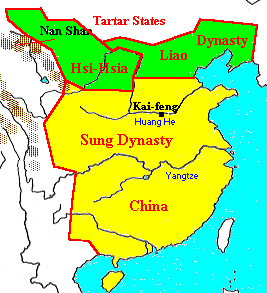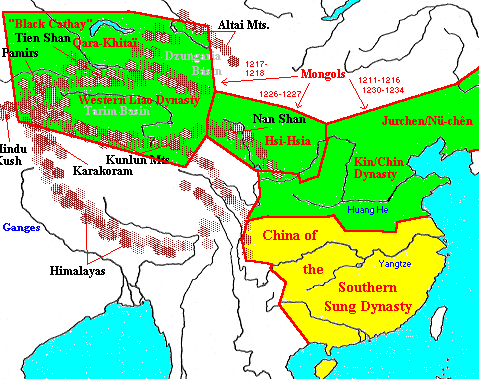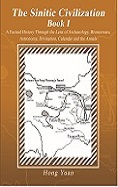
Sinitic Civilization-Book 1
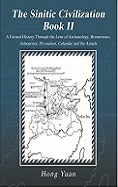
Sinitic Civilization-Book 2
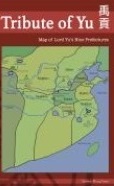
Tribute of Yu

Heavenly Questions
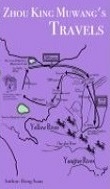
Zhou King Muwang's Travels
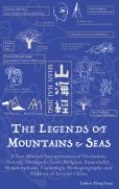
The Legends of Mountains & Seas
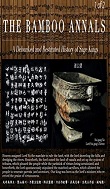
The Bamboo Annals - Book 1
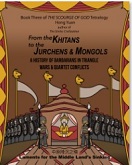
The Scourge-of-God-Tetralogy:
From the Khitans to the Jurchens & Mongols: A History of Barbarians in Triangle Wars and Quartet Conflicts
(available at iUniverse;
Google;
Amazon;
B&N)
|
|
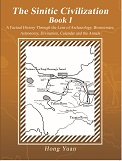
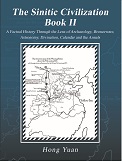 This website's contents are the result of 20 years' writings --that could be compared to the "archaeological deposits" in a literary sense.
The freelance-style writings on the website were not proof-read.
Portion of the writings, i.e., related to Pre-History, Xia, Shang, Zhou, Qin, and Han dynasties, was extracted, polished, reconciled, and synthesized into
The Sinitic Civilization - Book I which is
available now on
Barnes & Noble,
Amazon,
Google Play|Books
and
Nook.
Book II is
available now on
Amazon
and Barnes & Noble.
Check out this webmaster's 2nd edition --that realigned Han dynasty's reign years strictly observing the Zhuanxu-li calendar of October of a prior lunar year to September of the following lunar year
and
cleared this webmaster's blind spot on the authenticity of the Qinghua University's Xi Nian bamboo slips as far as Zhou King Xiewang's 21 years of co-existence with Zhou King Pingwang was concerned.
To give the readers a heads-up, this webmaster had thoroughly turned the bricks concerning the Sinitic cosmological, astronomical, astrological, historical, divinatory, and geographical records, with the indisputable discovery
of the fingerprint or footprint of the forger for the 3rd century A.D. book Shang-shu (remotely ancient history),
and
close to 50 fingerprints or footprints of the forger of the contemporary version of The Bamboo Annals --a book that was twice modified and forged after excavation.
All ancient Chinese calendars had been examined, with each and every date as to the ancient thearchs being examined from the perspective how they were forged or made up.
Using the watershed line of Qin Emperor Shihuangdi's book burning to rectify what was the original before the book burning,
this webmaster filtered out what was forged after the book burning of 213 B.C.
This webmaster furthermore filtered out the sophistry and fables that were rampant just prior to the book burning, and validated the history against the oracle bones, bronzeware and bamboo slips.
There are dedicated chapters devoted to interpreting Qu Yuan's poem Asking Heaven, the mythical mountain and sea book Shan Hai Jing, geography book Yu Gong (Lord Yu's Tributes), and Zhou King Muwang's travelogue Mu-tian-zi Zhuan, as well as a comprehensive review of ancient calendars, ancient divination, and ancient geography.
One chapter is focused on the Huns, with a comprehensive overview of the relationship between the Sinitic people and the barbarians since prehistory.
The book has appendices of two calendars: the first Zhuanxu-li anterior quarter remainder calendar (247 B.C.-85 A.D.) of the Qin Empire, as well as a conversion table of the sexagenary years of the virtual Yin-li (Shang dynasty) quarter remainder calendar versus the Gregorian calendar, that covers the years 2698 B.C. to 2018 A.D.
Refer to
Introduction_to_The_Sinitic_Civilization,
Afterword,
Table of Contents - Book I (Index)
and
Table of Contents - Book II (Index)
for details.
This website's contents are the result of 20 years' writings --that could be compared to the "archaeological deposits" in a literary sense.
The freelance-style writings on the website were not proof-read.
Portion of the writings, i.e., related to Pre-History, Xia, Shang, Zhou, Qin, and Han dynasties, was extracted, polished, reconciled, and synthesized into
The Sinitic Civilization - Book I which is
available now on
Barnes & Noble,
Amazon,
Google Play|Books
and
Nook.
Book II is
available now on
Amazon
and Barnes & Noble.
Check out this webmaster's 2nd edition --that realigned Han dynasty's reign years strictly observing the Zhuanxu-li calendar of October of a prior lunar year to September of the following lunar year
and
cleared this webmaster's blind spot on the authenticity of the Qinghua University's Xi Nian bamboo slips as far as Zhou King Xiewang's 21 years of co-existence with Zhou King Pingwang was concerned.
To give the readers a heads-up, this webmaster had thoroughly turned the bricks concerning the Sinitic cosmological, astronomical, astrological, historical, divinatory, and geographical records, with the indisputable discovery
of the fingerprint or footprint of the forger for the 3rd century A.D. book Shang-shu (remotely ancient history),
and
close to 50 fingerprints or footprints of the forger of the contemporary version of The Bamboo Annals --a book that was twice modified and forged after excavation.
All ancient Chinese calendars had been examined, with each and every date as to the ancient thearchs being examined from the perspective how they were forged or made up.
Using the watershed line of Qin Emperor Shihuangdi's book burning to rectify what was the original before the book burning,
this webmaster filtered out what was forged after the book burning of 213 B.C.
This webmaster furthermore filtered out the sophistry and fables that were rampant just prior to the book burning, and validated the history against the oracle bones, bronzeware and bamboo slips.
There are dedicated chapters devoted to interpreting Qu Yuan's poem Asking Heaven, the mythical mountain and sea book Shan Hai Jing, geography book Yu Gong (Lord Yu's Tributes), and Zhou King Muwang's travelogue Mu-tian-zi Zhuan, as well as a comprehensive review of ancient calendars, ancient divination, and ancient geography.
One chapter is focused on the Huns, with a comprehensive overview of the relationship between the Sinitic people and the barbarians since prehistory.
The book has appendices of two calendars: the first Zhuanxu-li anterior quarter remainder calendar (247 B.C.-85 A.D.) of the Qin Empire, as well as a conversion table of the sexagenary years of the virtual Yin-li (Shang dynasty) quarter remainder calendar versus the Gregorian calendar, that covers the years 2698 B.C. to 2018 A.D.
Refer to
Introduction_to_The_Sinitic_Civilization,
Afterword,
Table of Contents - Book I (Index)
and
Table of Contents - Book II (Index)
for details.
|
|
Table of lineages & reign years:
Sovereigns & Thearchs;
Xia-Shang-Zhou dynasties;
Zhou dynasty's vassalage lords;
Lu Principality lords;
Han dynasty's reign years
(Sexagenary year conversion table-2698B.C.-A.D.2018; 247B.C.-A.D.85)
|





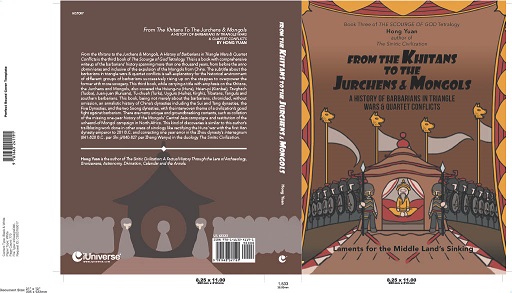
Epigraph|Preface|Introduction|T.O.C.|Afterword|Bibliography|References|Index
(available at iUniverse|Google|Amazon|B&N)
|
|
* In Commemoration of China's Fall under the Alien Conquests in A.D. 1279,
A.D. 1644 & A.D. 1949 *
 U.S.S.R./Comintern Alliance with the KMT & CCP (1923-1927)
U.S.S.R./Comintern Alliance with the KMT & CCP (1923-1927)
 Korean/Chinese Communists & the 1931 Japanese Invasion of Manchuria Korean/Chinese Communists & the 1931 Japanese Invasion of Manchuria
American Involvement in China: Soviet Operation Snow, IPR Conspiracy, Dixie Mission, Stilwell
Incident, O.S.S. Scheme, Coalition Government Crap, Amerasia Case & The China White Paper
* Stay tuned for "Republican China 1911-1955: A Complete Untold History" *
|
|
Zou Rong's Revolutionary Army;
Shin Kyu Sik's
Shrine (Spirit, Kunitama) of Korea
|
This snippet is for sons and daughters of China:
Heed the sons & ministers' agony and sorrow of our ancestors who died or lived through the Mongol, Manchu and Soviet-Chicom conquest
and
the Yongjia, Jingkang and Jiashen cataclysms !
Jeanne d'Arc of China:
Teenager girl Xun Guan breaking out of the Wancheng city to borrow the relief troops in the late Western Jinn dynasty;
Liu-Shao-shi riding into the barbarian army to rescue her husband in the late Western Jinn dynasty;
teenager girl Shen Yunying breaking into Zhang Xianzhong's rebels on the horseback to avenge on father's death in the late Ming dynasty.
China's Solitary and Lone Heroes:
Nan Jiyun breaking out of the Suiyang siege and charging back into the city in the Tang dynasty;
Zhang Gui & Zhang Shun Brothers breaking through the Mongol siege of Xiangyang in the Southern Soong dynasty;
Liu Tiejun breaking through three communist field armies' siege of Kaifeng in the Republican China time period;
Zhang Jian's lone confrontation against the communist army during the June 3rd & 4th Massacre of 1989.
|
|
|
LIAO DYNASTY
Before the Mongols, there existed in the Mongolia plains the Hsiungnu (Huns), Hsien-pi (Xianbei), Tavghach (Toba), Juan-juan (Ruruans), Tu-chueh (Turks), Uighurs (see Turk section), Kirghiz and the Khitans. Tribal empires rose and fell, and the conquered and the conquerors mixed up, and the ethnic and linguistic dividing lines blurred. Notable would be the fact that the so-called Indo-European nomads, Scythians and Yuezhi (Yüeh-chih), had migrated to Oxus and the Iranian world a long time ago, the Huns and Turks followed the path of the former, the left-over Huns, Ruruans and Turks disappeared, the Tuobas Sinicized in northern China, the Uygurs (Uighurs) took refuge in Ganzhou and Xinjiang after being replaced by the Kirghiz and the Karluks. The Khitans would come to rule eastern Mongolia, most of Manchuria, and much of northern China by AD 925.
|
There is a need to make a distinction between the Jurchens and the Manchus.
The royal family of the Jurchens could be different from the Jurchens that they ruled.
The history annals pointed out that the Jurchen founders came from the Korean peninsula, namely, different from the Jurchen natives in Manchuria.
According to Meng-da Bei Lu, the Jurchens and the Dadan [i.e., the Mongols], whose C haplogroup gene was validated today, were of the same family, with the distinction made for the Dadan people due to their civilized levels.
Those near the Chinese were called by cooked, those faraway called raw, and among the raw, there were two groups of black and white, black meaning the extreme uncivilized and the white meaning somewhat civilized. Genghis Khan's Mongols, according to the book, belonged to the Black Dadan, whose barbarity was exhibited in its customs of having each horseman round up ten non-Mongol villagers as fodder to fill moats and sack forts, while the Jurchens belonged to the White Dadan. The Dadan, according to the Chinese classics, could have some ingredients from the Shatuo Turks of the Tang Dynasty period.
Now, the Jurchens, when they were overrun by the Mongols, had been decimated.
The later Manchus could have nothing to do with the Jurchens, at most hijacking the Jurchen name.
The Manchu clan names bore no resemblance to the Jurchen clan names, such as the royal Wanyan name.
The purported Manchu founder Nuerhachi's six-generation ancestor carried the Mongol name 'Mengge-timuer'.
According to Korean book Lee Dynasty's factual Records, the Manchus disclosed to the Korean emissary that they belonged to the Mongol stock.
In A.D. 1635, Huang-tai-ji prohibited the people from calling the Manchus by the Jurchens (i.e., 'Zhu-shen').
The 'Qing' dynasty's name purportedly meant 'brave' in the Mongol language.
The fellow tribesmen that the Manchus acknowledged to be their own included Manzhou (Jianzhou), Hada, Wula, Huifa, and Yehe.
According to Lü Simian's analysis, the two characters 'Manzhou' (with the water sign to mean a midstream island or continent) for the Manchus derived from the 'Man-zhu' which was a Manchu chieftain's declension for self like what the word Malgal was for, with a conclusion that the Jurchens in Manchuria never changed their name for thousands of years since the Su-shen time of the Zhou dynasty but were given alternative names of 'Yi-lou' (cave dwelling) and 'Man-zhu' or Mohe (Malgal) for the chieftains' declension.
(The presently dominant C haplogroup people in southwestern Siberia, i.e., the Mongols, were ascertained to be of the C2b1b1-F3796 type. The Manchus, a northern C2b branch that separated from the former about 3000 years ago, carried the rare C2b1b2a-F14751 gene.
As to the C haplogroup barbarians in western Siberia 4000 years ago, they were found with a minor presence in the bronze sites and carried the C41a genes while their closest relatives, like C4a2, C4a3, were seen moving on to today's Ukraine.
Note that the majority stock of the Huns, the Xianbei, and the Khitans were ascertained by Jirin University frontier people research institute to be of the same 'North Asia' or paleo-Siberia stock.
The physical anthropology studies of the Khitan tomb remains showed that the Khitans belonged to the "North Asia" or the "Siberia-Baikal" type with a low cranial forehead and a higher facial appearance, i.e., people who had no similarity to the East Asia type people.
Note that there existed the
fundamental difference in cranial length, width and height among the East Asian population and
the paleo-Siberia/paleo-Mongolian-Plateau population, that could be 181 millimeters versus 175, 138
versus 144, and 134 versus 127, respectively.)
|
|
Origin Of the Khitans
The Khitans were related to the Tungus. The Xianbei-Wuhuan nomads were said to be Tungusic. They were driven to the Xianbei and Wuhuan Mountains after they accused the first Hunnic king Modu of patricide and were defeated by the Huns.
They were later relocated to today's Liaoning Province by Han Emperor Wudi. Since the Khitans resided in the same land as the Donghu, they were called the same name as Donghu or the Eastern Hu nomads. The important thing to be noted about the earlier Huns or Donghu (Xianbei-Wuhuan) would be that they were living alongside the Chinese for hundreds and thousands of years and should be deemed to be the semi-Sinicized semi-civilized people. But the later Khitans or Jurchens or Mongols fared much worse, and those people ate raw meat and did not know how to count their ages.
After the Hunnic decline in late first century A.D., the Xianbei moved back to the old territories, between the Yinshan Mountains and the Yanshan Mountains. There appeared a Xianbei chieftain called Tanshikui (reign A.D. 156-181) who established a Xianbei alliance by absorbing dozens of thousands of the remnant Huns. The Tanshihuai alliance disintegrated after the death of Tanshihuai. Warlord Yuan Shao campaigned against the Wuhuan and controlled three Wuhuan prefectures. After Ts'ao Ts'ao defeated Yuan Shao, Yuan's two sons, Yuan Shang and Yuan Xi, fled to seek refuge with the Wuhuans. Ts'ao Ts'ao campaigned against the Wuhuan, killed a chieftain called Tadu (with a same last character as Hunnic Chanyu Modu or Mote), and took over the control of today's southern Manchuria. After Wuhuan, another Xianbei chieftain called Kebi'neng emerged. Shi Xiong, a general under Ts'ao Ts'ao, broke this new Xianbei alliance by sending an assassin to kill Kebi'neng.
Xianbei could be classified into three groups, i.e., the Eastern Xianbei, Western Xianbei, and Toba Xianbei. The Eastern Xianbei nomads, with the major tribes of Murong, Yuwen, & Duan, would establish many short-lived successive states along the northeastern Chinese frontier, i.e., the various Yan Statelets. Among the Western Xianbei, Qifu would set up Western Qin (A.D. 385-431), and Tufa would set up Southern Liang (A.D. 397-414). Some of the Xianbei mixed up with the Huns.
The Hunnic Xia Dynasty (A.D. 407-431), established by Helian Bobo, was said to be of a mingle nature, called 'Tie Fu'. The Tie Fu Huns were born of a Xianbei mother and a Hunnic Father. Ultimately, the Toba (T'o-pa in Wade-Giles) Xianbei, who migrated to modern China's Shanxi Province from the Upper Khingan Ridge, united northern China.
After the Xianbei-Wuhuan-Toba disappeared into China's melting pot during the 16 Nations (A.D. 304-420), the newcomers from the northern hemisphere, together with the remaining Tungusic peoples, would be occupying the eastern part of Mongolia and today's Manchuria.
In A.D. 443, the barbarians who took over Tuoba's old territories, i.e., the upper Heilongjiang River and northern Xing'an Ridge, came to see Tuoba Wei Emperor (To'pa Tao) and told him that they had found the Toba ancestors' stone house, called 'Ga Xian Dong'. Tuoba Tao sent a minister called Li Chang to the stone house which was carved out of a natural cavern. In the 1980s, this cavern was discovered as well as the inscription left by Li Chang.
The Khitans (Qi Dan or Qidan) first appeared on the stage. The Khitans lived around the Liao River in today's Manchuria. To the east of the Khitans will be Koguryo, to the west the Xi Nomads (an alternative race of the Huns), to the north Huji or Mohe (Malgal) and Shiwei Tribes, and to the south the Yingzhou Prefecture of Tuoba Wei. Ancient Chinese records speculated that the Xi (or Kuzhen-xi) and the Khitan could be of same family. The Shiwei statelets would be where we are to trace the Mongols for their origin. Huji or Mohe (Malgal) would be where the Jurchens came from.
Ouyang Xiu of the Soong Dynasty, in his book New History of the Tang Dynasty, said that the Khitans were an alternative race of the Eastern Hu nomads and that Ts'ao Wei Dynasty (A.D. 220-265), under governor-general Wang Xiong of the Youzhou prefecture, defeated the Xianbei chieftain, Bi Neng (Ke Bineng), around the A.D. 230s. The Khitans were said be descendants of Kebi'neng Xianbei. Cai Dongfan mentioned that the Khitans had claimed descent from ancient Chinese lord called Shennong-shi (see pre-history).
The Khitans, who were related to the later Mongols, were said in Bai-guan Zhi of Liao Shi to have a Pi-shi-jun army, with historian Xu Zhongshu taking Pi-shi to be the inverse of Shi-wei, namely, the origin of his claim that 'wei' meant for the [pig] skin.
The Shiwei people shared the same language as the Malgal people (ancestors of the Jurchens and the Manchus).
They dwelled in the upper Heilongjiang River and the Argun River area. The location was to the east of the Turks, to the west of the Malgals,
and to the north of the Khitans.
The section Shi-wei Zhuian in Xin Tang-shu stated that there was the "Shi-wei Major" tribe beyond the mountain, a tribe dwelling next to the Shi-jian-he River, with the river having origin in the Ju-lun Lake and flowing towards the east. South of the Shi-jian-he River would be the Meng-wa Tribe, namely, the Mongols' original tribe. The Shi-jian-he River was taken to be today's Erguna River and the Ju-lun Lake (Hulun-buir lake).
(There was unfounded speculation that the Mongols' ancestors, i.e., 'shi wei', dwelled in central China thousands of years ago.
In Chang Fa of Shang1 Song4 in Shi Jing, there was an entry about Shang Dynasty founder-king Shang-tang's campaigns against several states, with the poem saying that Shang-tang first eliminated the Peng-surnamed Wei3 and Si-surnamed Gu4 states before tackling the Si-surnamed Kunwu-shi people, namely, 'Wei-Gu ji fa, Kunwu Xia-Jie'.
The Wei3 state, also known as Shi3-wei2 [or Xi1-wei2-shi which preceded the legendary Fuxi in Zhuang-zi's fable Da-zhong-shi of Zhuang Zi], was commonly taken to be located in today's Huaxian County of Henan, north of the Yellow River.
In Lu Lord Zhaogong's 11th year of Zuo Zhuan, there was a reply from Chang-hong to Zhou King Jingwang, in which the remotely ancient state of Shi3-wei2 was taken to be a lunar lodge among the 28 mansions of the Constellation, i.e., the 'ying2-shi4' (encampment) mansion.
Shi3-wei2 was also related to Liu Lei, a dragon trainer in the Xia dynasty, whom the Han Dynasty founder claimed to be their ancestor.
Shi3-wei2 was taken by Xu Zhongshu to be literally meaning the pig-skin clothed, a tradition later seen among the Yilou and Jurchen barbarians of Manchuria. The inference was that the Mongols' or the Jurchens' ancestors dwelled in central China thousands of years ago.
This, however, was more likely a wishful thinking of the modern times, with the Mongol 'shi-wei' name being much later terminology that happened to be a soundex, not a written record to the effect that the Mongols had carried on the name from their ancestors, knowing that the barbarians did not know how to count their age.
Zhou Liangxiao, citing a map with the marking of a Menggu-shan (Meng2gu3-shan) mountain in Qi-dan Guo Zhi, believed that the word Mongol (meng2gu3) derived from the Khitan 'Meng2-gu si' [barbarian management] sub-ministry, that was located in the Khitan Shang-jing (upper capital) city of Linhuang, with a Longmei-gong (dragon's brow) palace built in the shape of three mountains of Tianti (heavenly ladder), Mengguo (Meng country) and Bielu per Liao Shi. That is, Mengguo was a mountain, not a country, inverse to the case of Kunlun, i.e., the land where the immortals lived during the Han dynasty, being a tribe in Yu Gong (Lord Yu's tributes) in the late Zhou dynasty time period.)
Tang Dynasty vs the Khitans
New History of the Tang Dynasty said that by the time of Tuoba's Northern Wei Dynasty (A.D. 386-534), the ancestors of the Khitans adopted the name Khitan for themselves. New History of the Tang Dynasty said that the Khitans possessed eight tribes and they were subject to the Turks. The Khitan chieftain was conferred the title of 'Sijin' by the Turks. The Khitan chieftain's clan name would be 'Dahe-shi', which sounded like a Japanese name. The Turks assigned Khan Tuli the post in charge of the Khitan and Malgal Tribes.
The Khitan chieftain was conferred the title of 'Sijin' (governor or satrap) by the Turks.
Around the A.D. 620s, one Khitan chieftain (Sun Aocao) paid pilgrimage to Tang's first Emperor, Gaozu, together with a Malgal chieftain (Tudiji). Two years later, the Khitans sent over horses and leathers.
In A.D. 627, Tang Emperor Taizong got enthroned after staging the "Xuan Wu Men Coup D'etat" during which he killed two brothers and forced Emperor Gaozu into abdication. This year, the Tiele Tribes, including Xueyantuo, Huihe and Bayegu, rebelled against the Turks. Khan Xieli accused Khan Tuli of failing to quell the Tiele rebellion. Being attacked by Khan Xieli, Khan Tuli requested for help with Tang Emperor Taizong in A.D. 628.
Taking advantage of the Tiele rebellions against the Turks, in A.D. 628, Khitan chieftain Dahe Mohui defected to Tang from the Turks. The Turks pleaded with Tang Emperor Taizong to have the Khitans relocate back to be under the Turkic control in exchange for surrendering a Chinese rebel called Liang Shidu, but Emperor Taizong declined it.
The next year, the Xueyantuo tribe proclaimed themselves as a khan and sought an alliance with Tang.
When Dahe Mohui came to the Tang court in A.D. 629, Taizong bestowed drums, flags, umbrellas and other ritual instruments which the Khitans later treated as a token of power during their tribal power struggles.
In A.D. 630, Tang ordered General Li Jing on a full campaign against Turkic Khan Xieli. The Tang army captured Khan Xieli.
The Khitans, together with the Xi nomads, followed Taizong in the Korean campaigns. Emperor Taizong, en route of return from the campaign against Korguryo (Koguryo), called on Khitan chieftain Kuge and other elderly people for a meeting at Yingzhou, west of the Liao River. Emperor Taizong conferred the title of 'leftside wuwei (martial defender) general' onto Kuge.
Another Khitan chieftain, Luqizhu, submitted to Tang and was made 'ci shi' (satrap or governor) of Quju and his land was made into the prefecture of Xuanzhou, nominally under the supervision of the Yingzhou 'dudu-fu' office. When Kuge led his people to Tang, a new 'dudu-fu' (governor-general) office, Songmo (pine desert), was set up, and Kuge was conferred the post of Songmo 'dudu' (governor-general) in charge of ten prefectures in the area. Kuge was given the royal family name of Li by Tang Emperor Taizong. Among the ten prefectures would be those converted from the original eight Khitan tribes.
The eight Khitan chieftains were conferred the post of nine 'ci shi'. Luqizhu was retained as 'ci shi' of the Xuanzhou prefecture.
The Khitans first rebelled against Tang in A.D. 656-661 and again in A.D. 696. At the times of Tang Empress Wuhou, with the death of Li Kuge, the Khitans, in collusion with the Xi nomads, began to rebel against Tang. Li Kuge had two grandsons: Li Kumuoli and Li Jingzhong. In A.D. 696, Li Jingzhong, together with Sun Wanrong (grandson of chieftain Sun Aocao), killed Tang 'dudu' (governor-general) Zhao Wenhui for the reason of being insulted. Li Jingzhong declared himself 'Wushang Khan' (khan with nobody above him), employed 'ci shi' Sun Wanrong as a forerunner general, and attacked Tang's Chongzhou prefecture with a claim of an army of 100,000. Empress Wuhou dispatched the King of Liang (Wu Sansi) and 28 generals against the Khitans, but Tang was defeated by the Khitans at Xi-xiashi (west valley stone). The Khitans failed to take over the Pingzhou prefecture. Wuhou then dispatched the King of Jian'an (Wu Youyi) against the Khitans. Sun Wanrong fled after the Khitans failed to take over the Tanzhou prefecture where Tang deputy zong guan Zhang Jiujie and hundreds of martyr soldiers steadfastly defended the city. Li Jinzhong died shortly afterward. Turkic Khan Muochuo helped Tang in attacking the rear of the Khitans. Sun Wanrong re-assembled his forces and dispatched his generals (Luo Wuzheng and He A'xiao) against the Jizhou prefecture, killed 'ci shi' Lu Baoji and abducted over one thousand Chinese. Empress Wuhou dispatched 'shang shu' Wang Xiaojie and a 170,000-men army against the Khitans, but the Tang army was defeated at Dong-xiashi (east valley stone) and Wang Xiaojie was killed. Sun Wanrong then slaughtered the Youzhou prefecture. The King of Jian'an failed to defeat Sun. Wuhou then ordered that the King of Henei-jin (Wu Yizong), 'yu shi' Lou Shide and 'You-wuwei-wei General Shazha Zhongyi led an army of 200,000 against the Khitans. Yang Xuanji, 'zong guan (omnibus magistrate) of the Shenbian-dao Circuit rallied the Xi nomadic army and attacked the Khitans from the rear. The Tang army killed He A'xiao and captured Luo Wuzheng and Li Kaigu. When Sun Wanrong re-assembled his army to fight Xi, the Xi nomads encircled Sun and defeated the Khitans. Sun fled to east of the Lu4-he (Chaobai-he) River, where he was killed by his servant during rest. Zhang Jiujie relayed Sun's head to the rest of the Khitans, which caused the Khitans to collapse. In A.D. 697, Wuhou gladly changed the era to the first year of Shengong (divine feats) and declared an amnesty across the nation.
Hence, the Khitans fled to the Turks for protection.
In A.D. 700, two Tang nomadic generals, Li Kaigu and Luo Wuzheng, who were previously caught by Tang, defeated the Khitans again.
In A.D. 714, Shihuo (Li Jinzhong's uncle) and xielifa Yi-jian-chuo, leading their clan, defected from Turkic Khan Muchuo to Tang. Tang Emperor Xuanzong bestowed them an 'iron certificate' (a document which would exempt the holder of the death penalty). Two years later, Shihuo came to Tang with Xi chieftain Li Dapu. The Songmo-fu Prefecture was re-established, with Shihuo conferred the post of du du, king of the Songmo-jun commandary and leftside jinwu-wei grand general. Heads of the eight Khitan tribes were conferred posts as ci si. A Tang royal family princess, Princess Yongle (daughter of the grandson of King Dongping-wang), was sent to the Khitan chieftain as a bribe. The Turks would complain to Tang numerous times, saying that both the Xi and Khitan had received Tang princesses but the Turks did not get this privilege. In 717 AD, Shihuo died, and a brother, called Suogu, inherited everything. The next year, Suogu and Prince Yongle came to the Tang court.
A Khitan general, called Ke-tu-yu, rebelled against Suogu. Suguo fled to the Yingzhou prefecture and was given 500 soldiers by Tang du du Xu Qindan. Suguo then called on Xi chieftain Li Dapu to attack Ke-tu-yu, but both were killed by Ke-tu-yu. Xu Qindan, being afraid of Ke-tu-yu, relocated to the Yuguan Pass. Ke-tu-yu then selected Suopu's brother (Yueyu) as a Khitan king and requested pardon with the Tang court. Tang conferred the king title onto Yueyu and pardoned Ke-tu-yu. When Yueyu came to Tang, he was given Princess Yanjun as a bride. When Yueyu died, a brother called Tuyusi was enthroned. Tuyusu, having rifts with Ke-tu-yu, fled to Tang with Prince Yanjun; Tuyusi was conferred the title of King of the Liaoyang-jun commandary. Ke-tu-yu then selected Li Jinzhong's brother (Shaogu) as the king. Tang sent over Princess Songhua to Shaogu, and Shaogu sent over his son as a hostage at the Tang court. Ke-tu-yu came to the Tang court for a second time and was mis-treated by the Tang prime minister. Three years later, Ke-tu-yu killed Shaogu, selected Qulie as the new Khitan king, and compelled the Xi nomads into vassalage with the Turks. Princess Donghua fled to Pinglu. The Tang court ordered a huge campaign against the Khitans and defeated Ke-tu-yu. The Xi nomads surrendered to Tang. The next year, Ke-tu-yu attacked the border areas. Tang zhang shi of Youzhou, Xue Chuyue, led over 10,000 cavalry and the Xi nomads against Ke-tu-yu. Ke-tu-yu had the Turks backing him, and the Xi nomads changed loyalty. Two Tang generals were killed, and two were defeated, with a casualty of over 10,000 deaths. Tang made Zhang Shougui as the new zhang shi of Youzhou. Zhang Shougui secretly contacted a Khitan general (Li Guozhe) to have him lay siege of Ke-tu-yu. In A.D. 734, Li Guozhe killed Ke-tu-yu and Qulie. Tang conferred the title of King of the Beiping-jun commandary and du du of Songmo onto Li Guozhe. In A.D. 735, the Ke-tu-yu remnants slaughtered Li Guozhe and his family, with one Li son fleeing to An'dong. The Khitans, under the leadership of Yali (Zuli, Nieli or Nili, the ancestor of Yelü Ahbaoji), selected, Zuli, as Khan Zuwu. Per Li Xihou, Khan Zuwu was a Yaonian-shi clan member, who replaced the Dahe-shi clan as a Khitan leader. (Speculation about the Dahe-shi clan would consider Shaogu as its last heir.)
In A.D. 737, Zhang Shougui defeated the Khitans again. In A.D. 745, Khitan chieftain Li Huaixiu surrendered to Tang and was conferred du du of Songmo and King Chongshun-wang; Li Huaixiu was given Tang Prince Jingle as a bride. In the same year, Li Huaixiu killed Prince Jingle and fled home. An Lushan, jie du shi (governor-general) of Fanyang, defeated Li Huaixiu. (Per Li Xihou, Li Huaixiu could be the same person as Khan Zuwu.) A new chieftain, Li Kailuo, was made into King Gongren and du du of Songmo.
The Khitans would continue its developments in power, and by the mid-750s, they defeated the Tang army led by An Lushan. An Lushan earlier had led an army in hundreds of thousands and tried to quell the Khitan rebellion with a Xi nomad guide.
An Lushan proposed to Tang Emperor Xuanzong in campaigning against the Khitans; An Lushan assembled an army of over 100,000 from the prefectures of Youzhou, Yunzhong, Pinglu and Hedong; An Lushan, using the Xi nomads as guide, had a fight with the Khitans on the south bank of the Huang-shui River.
An Lushan was defeated, with a casualty of thousand deaths. An Lushan would be engaged in zigzag wars with the Khitans till his rebellion in A.D. 755.
Tang nomadic general An Lushan's rebellion (i.e., the An-Shi rebellion) broke out in October of A.D. 755. This will bring about Tang's decline. Before and after this time period, the Khitans had paid visits to the Tang court dozens of times. Always on a yearly basis, the Khitan chieftains came to Tang, and they stayed in the special guesthouses in hundreds.
The Khitans later submitted to Huihe (Uygurs). Tang did not confer them any more titles because of their submission to Huihe. It would be in A.D. 842 that Khitan chieftain Quxu came to submit to Tang again after the Uygurs were destroyed by the Kirghiz. Tang Emperor Wuzong dispatched several columns of army against Huihe by taking advantage of the Kirghiz attacks. A Huihe chieftain, Wenmeisi, surrendered to Tang. Governor-general of Youzhou, Zhang Zhongwu, would replace the Khitan's Uygur seal with a Tang seal. In A.D. 860s, Khitan king Xi-er-zhi sent an emissary to Tang. After Xi-er-zhi would be Qinde. Beginning from A.D. 885, with the decline of Tang Dynasty (A.D. 618-907), the Khitans began to conquer the Dadan, Xi nomads and Shiwei statelets in the late A.D. 880s. They began to raid into northern China again. Governor-general Liu Ren'gong counter-attacked the Khitans by going beyond the Zhaixing-ling (star grabbing) Ridge and burnt the grass to starve their herds. The Khitans lost a lot of horses and requested for a ceasefire. The Khitans broke the peace treaty and invaded China with over ten thousand cavalry. Later, Liu Shouguang of the Pingzhou prefecture defeated them again by capturing their generals during a peace banquet.
Peace ensued for 10 years. Khitan King Qinde, in his late years, gradually lost his control over the eight Khitan tribes. Per History of the Tang Dynasty, the Dahe-shi clan hence lost control of the power over the Khitan tribes.
Yelü Ahbaoji was selected because the other Yaonian-shi chieftains failed to do the job. Yelü Ahbaoji was conferred the post of yilijin of the Dielie tribe by Yaonian Khan Hengdejin in A.D. 901.
Yelü Ahbaoji (Yeh-lu A-pao-chi A.D. 872-926) took in a lot of the Youzhou and Zhuozhou Chinese who fled from warlord Liu Shouguang's tyranny. Yelü Ahbaoji expanded his territories by sacking the Chinese border cities and abducting the civilians. The eight Khitan tribes used to have a system of rotating rule for selecting their chieftains every three years. Yelü Ahbaoji took over the reign for 9 years without rotating the seat after hearing the Chinese saying that kings did not rotate. Under the pressure of the other tribal heads, Yelü Ahbaoji moved southward where he set up an independent city called 'Han Cheng', namely, the Han Chinese city, near the bank of the Luan-he River. Yelü Ahbaoji had the Chinese cultivate the lands and mine the ores. Later, in the early years of Posterior Liang, around A.D. 907, he, using the trick of his Huihe wife (Shulü), cheated the tribal leaders into a party and killed them all. Hence, Yelü Ahbaoji, a Yaonian-shi clan member, controlled all Khitan tribes.
Five Dynasties vs the Khitan Liao Dynasty
The Khitans were said to have been pressured into moving into northern China where they established the Khitan Dynasty in A.D. 907. The Naimans, who first allied with the Kirghiz who in turn defeated the Uigurs in A.D. 840, grew in strength and drove the Kirghiz to the River Yenisei and rooted the Keraits from their homeland on the Irtysh in the Altai and drove them towards today's Manchuria, hence indirectly causing the Khitans to move to northern China where they established the Khitan Dynasty in A.D. 907 and renamed it to Liao Dynasty in A.D. 938 (or A.D. 947 according to the alternative claim). The Khitans ruled eastern Mongolia, most of Manchuria, and much of northern China by A.D. 925.
The demise of Tang Dynasty brought the so-called Five Dynasties (A.D. 907-960) in northern China and 10 Kingdoms (A.D. 902-979), with nine kingdoms in southern China and Northern Han (A.D. 951-979) in Shaanxi. As recorded in history, the three dynasties in between Posterior Liang and Posterior Zhou were of alien nature, founded by generals who belonged to a group of nomads called Shatuo (Sha'to, a Turkic tribe). While Posterior Liang (A.D. 907-923) was set up by Zhu Wen (who first betrayed rebel leader Huang Chao and then usurped Tang Dynasty), the leader of later Posterior Tang (A.D. 923-936), Posterior Jinn (A.D. 936-946) and Posterior Han all came from nomadic Shatuo (Sha'to). This time period marks the penetration and influence of the Khitans on northern China.
Posterior Tang leader had once gone into exile in another nomadic group of people called Dadan (to be mixed up with the name Tartar later) till he was recalled by the Tang emperor for quelling the Huang Chao Rebellion. When Zhu Wen usurped Tang, General Li Keyong and his son Li Chunxu set up the so-called Posterior Tang. Around A.D. 907, the Khitans invaded northern Chinese post of Yunzhong. To combat Posterior Liang, Li Keyong would strike an agreement with the Khitans (a branch of earlier Xianbei nomads) against Posterior Liang. But the Khitans, under Yelü Ahbaoji (Yeh-lu A-pao-chi A.D. 872-926) and his Uygur wife, would collude with Posterior Liang. Yelü Ahbaoji had earlier led a 300 thousand army to an alliance meeting with Li Keyong and swore to be brothers. Yelü Ahbaoji gave a few thousand horses to Li Keyong. But, Yelü Ahbaoji would change mind soon, and he sought suzerainty with Zhu Wen for sake of title conferring as well as marriage with Zhu Wen's daughter.
Li Xihou commented that Yelü Ahbaoji intended to be conferred kingship by a Chinese emperor for sake of solidifying his rule over eight tribes at home. Posterior Liang exchanged emissaries with Yelü Ahbaoji few times, and had Yelü Ahbaoji dispatch 300 Khitan cavalry to Posterior Liang as a show of submission. Li Keyong, hearing of the Khitan betrayal, got ill and passed away, leaving three arrows with his son (Li Chunxu, Posterior Tang Emperor Zhuangzong) as oaths to destroy Posterior Liang and the Khitans. However, Yelü Ahbaoji failed to go to Posterior Liang capital for the conferral, and Khitans altogether sent 4 missions to Posterior Liang.
The Khitans under Yelü Ahbaoji obtained a Chinese minister called Han Yanwei and quickly conquered, in A.D. 926, tribes like Dangxiang (Tanguts) in the west, and the Tungusic P'o-hai in the east and north Korea. (the Khitans conquered Xi nomad and She Wei in the north earlier.) Khitan became a much larger northern power. The Khitans ruled eastern Mongolia, most of Manchuria, and northern China by A.D. 925.
After Li Chunxu overthrew Posterior Liang in A.D. 921, Tangut's Li Renfu expressed loyalty to Posterior Tang.
In A.D. 933, Tangut's Li Yichao assumed the post of his father Li Renfu.
Posterior Tang Emperor Mingzong [Li Siyuan or Li Dan, reign 926-933] had campaigned against Li Yichao for his refusal to relocate to Yanzhou. After laying siege of Xiazhou in vain for over hundred days, Posterior Tang Emperor Mingzong withdrew the siege and re-confirmed Li Yichao's post.
After Li Yichao's death in A.D. 936, brother Li Yiyin assumed the Tangut post.
Posterior Jinn (A.D. 936-946), led by a Posterior Tang general called Shi Jingtang, also a Shatuo (Sha'to) nomad, in order to fight Posterior Tang, would secede 16 zhou (a unit larger than prefecture but smaller than province) to the Khitans, including today's Beijing city which was never recovered from the nomads till Ming Dynasty (A.D. 1368-1644) overthrown the Mongolian Yuan Dynasty.
Yelü Ahbaoji's son, Yelü Deguang, would assist Posterior Jinn in destroying Posterior Tang and hence take over 16 northern Chinese prefectures as a ransom. With the help of the Khitans, Posterior Jinn took over Luoyang and destroyed Posterior Tang.
After Shi Jingtang, i.e., Tang Emperor Mingzong's son-in-law, colluded with the Khitans in overthrowing Posterior Tang and establishing Posterior Jinn, Tangut's Li Yiyin continued to receive the old conferrals.
Posterior Jinn further caught Tangut rebels in A.D. 943 on behalf of Li Yiyin.
However, rifts between the Khitans and Posterior Jinn ensued, and the Khitans destroyed Posterior Jinn.
When Posterior Jinn Emperor Chudi refused to acknowledge vassalage to the Khitans, Yelü Deguang attacked Posterior Jinn.
When the Khitans attacked Posterior Jinn in A.D. 944, Tangut's Li Yiyin led a combined force of 40,000 Tibetans, Qiangs and Han Chinese in attacking the west of the Khitans by crossing the Yellow River at Linzhou.
Yelü Deguang destroyed Posterior Jinn in A.D. 946. the Khitans renamed their dynasty to the Liao Dynasty in A.D. 947 in the attempt of ruling northern China.
Khitan chieftain, Yelü Deguang, tried to establish himself as emperor of northern China and declared the Liao Dynasty while he was occupying the capital of Posterior Jinn in A.D. 947. (Khitan Liao's dynasty lasted A.D. 916-1125, but the name of Liao was to do with A.D. 947 when Posterior Jinn was destroyed. Liao was meant for a dynasty in China, while the Khitan name was for their original northern dynastic title.)
When weather got hot and the Chinese under Posterior Han Dynasty's Liu Zhiyuan rebelled against them, Yelü Deguang retreated to the north and died en route of home, at a place called the Fox-killing Ridge.
Liu Zhiyuan of the Shatuo origin established the Posterior Han Dynasty. Posterior Han Dynasty continued the pacification policy as to the Tanguts, and further seceded the Jingzhou (Mizhi county of Shenxi) prefecture to Tangut's Li Yiyin in A.D. 949 and conferred the title of "zhong shu ling" (minister for central secretariat).
 The Scourges-of-God Tetralogy
would be divided into four volumes covering
Hsiung-nu (Huns), Hsien-pi (Xianbei), Tavghach
(Tuoba), Juan-juan (Ruruans), Avars, Tu-chueh (Turks), Uygurs (Huihe), Khitans, Kirghiz, Tibetans, Tanguts, Jurchens, Mongols and Manchus and
southern barbarians.
Book I of the tetralogy would extract the contents on the Huns from
The Sinitic Civilization-Book II,
which rectified the Han dynasty founder-emperor's war with the Huns on mount Baideng-shan to A.D. 201 in observance of the Qin-Han dynasties' Zhuanxu-li calendar.
Book II of the Tetralogy would cover the Turks and Uygurs.
And
Book IV would be about the Manchu conquest of China.
The Scourges-of-God Tetralogy
would be divided into four volumes covering
Hsiung-nu (Huns), Hsien-pi (Xianbei), Tavghach
(Tuoba), Juan-juan (Ruruans), Avars, Tu-chueh (Turks), Uygurs (Huihe), Khitans, Kirghiz, Tibetans, Tanguts, Jurchens, Mongols and Manchus and
southern barbarians.
Book I of the tetralogy would extract the contents on the Huns from
The Sinitic Civilization-Book II,
which rectified the Han dynasty founder-emperor's war with the Huns on mount Baideng-shan to A.D. 201 in observance of the Qin-Han dynasties' Zhuanxu-li calendar.
Book II of the Tetralogy would cover the Turks and Uygurs.
And
Book IV would be about the Manchu conquest of China.
From the Khitans to the Jurchens & Mongols: A History of Barbarians in Triangle Wars and Quartet Conflicts
, i.e., Book III of
the Scourge-of-God-Tetralogy,
focused on the Khitans, Jurchens and Mongols, as well as provided the annalistic history on the Sui and Tang dynasties, the
Five Dynasties & Ten Kingdoms, and the two Soong dynasties.
Similar to this webmaster' trailblazing work in rectifying the Han dynasty founder-emperor's war with the Huns to 201 B.C. in The Sinitic Civilization - Book II,
this Book III of the Scourge-of-God-Tetralogy
collated
the missing one-year history of the Mongols' Central Asia campaigns and restituted the
unheard-of Mongol campaign in North Africa.
|
The Scourges of God: A Debunked History of the Barbarians" - available at iUniverse|Google|Amazon|B&N
From the Khitans to the Jurchens & Mongols: A History of Barbarians in Triangle Wars and Quartet Conflicts
(The Barbarians' Tetralogy - Book III)
Epigraph,
Preface,
Introduction,
Table of Contents,
Afterword,
Bibliography,
References,
Index
|
|
Table of Contents
(From the Khitans to the Jurchens & Mongols: A History of Barbarians in Triangle Wars and Quartet Conflicts)
Section One: The Barbarians of the Steppes
Chapter I: The Hu (Huns) & Eastern Hu Barbarians ............................................1
The Khitans, Xi, Kuzhen-xi, Shi-wei & Malgal ...................................................15
Chapter XI: Five Dynasties (A.D. 907-960) ......................................................141
The Khitans vs. the Posterior Tang Dynasty ........................................................152
The Posterior Han Dynasty (A.D. .947-950) vs. the Khitan Liao Dynasty ............164
The Khitans, the Shatuo, the Tanguts vs. the Five Dynasties ..................................170
Section Five: The Jurchens & the Mongols
Chapter XVII: Demise of the Khitan Liao Dynasty ...............................................305
Yelv Dashi's Kara-khitai (Western Khitay) Empire ................................................305
The Jurchens' Wars against the Khitans & Zu-bu (Da-da2, Tatars) .........................307
The Mongols' Kinsmanship with the Khitans and Jurchens ......................................381
Chapter XXII: The Mongol Attacks on the Tatars, Naimans, Keraits, Tanguts,
Jurchens, Khitans in Manchuria & Kara-Khitay (from A.D. 1202
to 1219) .....403
Attack on the Kara-Khitay (A.D. 1214) .................................................................415
Attack on the Khitans in Manchuria ........................................................................417
The Mongol Attacks on the Keraits & Kara-Khitay ................................................420
The Mongol Attack on the Khitans along the Manchuria-Koryo Border.....................422
Chapter XXIII: The Mongol Campaigns Against Semiryechye & Central Asia
(A.D. 1216-1224) ................423
The Mongol Campaign against Kuchlug's Kara-Khitay (A.D. 1218) ........................425
|
|
At this time, Southern Tang (A.D. 937-975) in Nanking, south of the Yangtze River, had contacted the Khitans, expressing a desire to go to the ex-Tang capital of Chang'an to maintain the imperial tombs.
When the weather got hot and the Chinese under Liu Zhiyuan rebelled against them, Yelü Deguang retreated to the north and died en route of home, at a place called the Fox-killing Ridge.
A Posterior Jinn general of Shatuo tribe origin, Liu Zhiyuan, would be responsible for rallying an army and pressured the Khitans into retreat, and hence Liu founded the Posterior Han Dynasty (A.D. 947-950), citing the same family name as Han Empire's founder.
Yelü Deguang's nephew (Wuyue Yelü Ruan), would succeed the Khitan post in A.D. 947. Five years later, in A.D. 951, he was assassinated.
Posterior Han Dynasty continued the pacification policy as to the Tanguts, and further seceded Jingzhou (Mizhi county of Shenxi) to Li Yiyin in A.D. 949 and conferred the title of "zhong shu ling" (minister for central secretariat).
Guo Wei, a general of Posterior Han Dynasty responsible for defeating Posterior Jinn, rebelled after his family were slaughtered in the capital; Guo later staged a change of dynasty by having his soldiers propose that he be the emperor of Posterior Zhou (A.D. 951-960), while the uncle of Posterior Han emperor declared Northern Han (A.D. 951-979) in today's Shaanxi and allied with the Khitans. Yelü Deguang's son, Wulu (Yelü Jing), now succeeded in A.D. 951. Note that the Yelü family had adopted the Chinese first names here, and they had Sinicized by adopting the Chinese language, rituals and governmental structure.
After Guo Wei, i.e., "liu shou" (governing magistrate) for Yedu (Yecheng of Shanxi), killed Posterior Han Dynasty Emperor Yindi (r 948-950), Guo Wei upgraded Tangut's Li Yiyin to the title of King Longxi-jun-wang in A.D. 951.
Yelü Deguang's son, Wulu (Yelü Jing), would now succeed in A.D. 951. Note that the Yelü family had adopted Chinese first names here, and they had Sinicized by adopting Chinese language, rituals and governmental structure.
The Khitans changed their dynastic names back and forth between Liao and Khitan, several times. First called Khitan in A.D. 907, they did not have the chronicle year till A.D. 916. They renamed it to Liao in A.D. 947, renamed it to Khitan in A.D. 983, and renamed it back to Liao in A.D. 1066.
Guo Wei, i.e., Posterior Zhou Dynasty Emperor Taizu (r 951-954), conferred the title of King Xiping-wang onto Li Yiyin in A.D. 954.
Li Yiyin did not severe the relations with Northern Han Dynasty till A.D. 957.
Guo Wei's Posterior Zhou will pass on to his foster son, Chai Rong, to be eventually replaced by his general called Zhao Kuangyin who founded the [Northern] Soong Dynasty (A.D. 960-1127).
In A.D. 960, Zhao Kuangyin initiated the Chenqiao Coup, took over the reign from Posterior Zhou and established the Soong Dynasty as Emperor Taizu (r 960-976).
Tangut's Li Yiyin promptly dispatched an emissary to the Soong court for expressing loyalty, and changed his name to Li Yixing for avoiding the conflict with the last character of the given name of Zhao Kuangyin's father.
Li Yiyin surrendered 300 stallions to the Soong court in A.D. 962 and received a jade-belt as imperial bestowal in return.
When Li Yiyin died in A.D. 967, Soong Emperor Taizu ordered a mourning for three days and conferred Li Yiyin the title of King Xia-wang posthumously.
Tangut's Li Guangrui assumed his father's post.
The Khitan, the Western Xia Tanguts and the Soong Chinese, during the remainder of the 11th century and the early years of the twelfth century, were frequently at war with each other till the Jurchens came along. The Jurchens, ancestors of the later Manchu, would defeat the Khitans in a seven-year war (A.D. 1115-1122) by means of an alliance with Northern Song.
Song Dynasty vs the Khitan Liao Dynasty
Khitan Emperor Muzong (Yelü Jing r 951-969) was assassinated in A.D. 969. Wuyue's son, Yelü Xian, would be enthroned as Khitan Emperor Jingzong (r 969-982). Yelü Xian would appoint Xiao Shouxing as 'shangshu-ling' and take over Xiao's daughter as his empress.
During Soong Dynasty, Tangut's Toba Sigong descendant sought suzerainty with the Soong Chinese and changed their last name to the Soong royal family name of 'Zhao' from the Tang family name of 'Li'. However, Xixia sought suzerainty with the Khitans at the same time.
Li Guangrui, in A.D. 975, declined Northern Han Emperor Liu Jiyuan's demand for a concerted attack at Soong Dynasty.
In May 975, Northern Han dispatched an army of 10,000 for crossing the Yellow River to attack the Tanguts' Yinzhou city.
In August, Soong Emperor Taizu launched a five prong attack at Northern Han, and the Tanguts assisted Soong in attacking Northern Han from the west.
In A.D. 976, Soong Emperor Taizu passed away, and his brother Zhao Guangyi succeeded as Soong Emperor Taizong (r 976-997).
Li Guangrui changed his name to Li Kerui for conflict with the first character of the given name of Zhao Guangyi.
Son Li Jiyun [Li Jijun] succeeded the post of Li Kerui in A.D. 978.
Empress Yanyan (or Yeye), after the death of Yelü Xian in A.D. 979, would assume the Khitan regency as so-called Xiao-niangniang or Xiaotaihou. Empress Xiaotaihou changed the dynastic name back to Khitan. i.e., Da Qi Dan or the Great Khitan. Yelü Rongxu was enthroned in A.D. 982 and continued till A.D. 1031, but Xiaotaihou held the actual power. Xiaotaihou appointed a Chinese, Han Derang (son of Han Kuangsi or Han Guosi) as so-called 'shumi-shi' in charge of secretariat, Yelü Boguzhe in charge of areas west of Beijing, Yelü Xiuge in charge of areas south of Beijing, and accepted the surrender of a Soong Chinese general (Li Jiqian). When Soong Dynasty's second emperor, Soong Taizong (r 976-997), tried to attack Beijing (after quelling the remnant Posterior Han), the Khitans dealt Soong Chinese a thorough defeat. Xiaotaihou later took in Han Derang as her lover and conferred onto him the post of prime minister and the title of King Jin; Xiaotaihou gave Han Derang the Khitan name of Yelü Rongyun. When Xiaotaihou and Han Derang passed away, Yelü Rongxu ordered that Han Derang be buried next to the tomb of Xiaotaihou. Yelü Rongxu campaigned against Koryo for the killing of Koryo king by a minister.
In January of the 4th year of the Taiping-xingguo Era, i.e., 979, Emperor Taizong dispatched General Pai Mei and et al., on a multi-route invasion against Northern Han. In March, General Guo Jin, 'guan cha shi" [observer] for Yunzhou, took over Xilongmen-zhai [west dragon gate fort]. The Soong army defeated the Khitan relief at Shiling-guan-fu. The Khitans, under the command of Yelü Sha, were half-crossing a creek at Baimajian [white horse creek] when the Soong army launched the attack of Bamaling. The Soong army took over Mengxian, Longzhou and Luanzhou. At Taiyuan, the Soong army fired at the city wall with stone throwers. In May, the Soong army took over Yangmacheng [sheep and horse fort], to the southwest of Taiyuan. Liu Jiyuan, after running out of supply, surrendered to the Soong army.
Emperor Taizong, who personally led the attack at the south wall of Taiyuan at one time, ordered the old city to be burnt for its steadfast defence, and relocated the wealthy residents, monks and Buddhists to Xin-bingzhou (Yuci) and renamed Taiyuan to Ping-jin [quelling Shanxi] County.
In June, the Khitan 'ci shi' for Dong-Yizhou [Qigou-guan], Liu Yu, surrendered his city. At Shahe [sandy river], Soong generals Fuqian and Kong Shouzheng defeated Yelü Xida [i.e., the Khitan northside king]. Khitan "pan guan" [judge] for Zhuozhou, Liu Yuande, surrendered to Soong.
The Soong emperor, after taking the Yi and Zhou prefectures, then ordered a campaign against the Khitan southern capital, Youdu-fu [i.e., Peking]. Shi Shouxin was assigned the job as a frontline supervisory general.
The emperor intended to retake the 16 prefectures that were ceded to the Khitans by the Shatuo dynasty.
Among the 16 prefectures would be seven prefectures located to the southeast of the Taihang-shan Mountain range, and nine to the northwest of the mountain range.
The seven prefectures to the southeast were called 'shan-qian' or the front-of-the-mountain prefectures, including the prefectures of You[zhou], Ji[zhou], Ying[zhou], Mo[zhou], Zhuo[zhou], Tan[zhou], and Shun[zhou].
The other nine hind-of-the-mountain prefectures were situated on the outer side of the Inner Great Wall that extended southwestward to Shuozhou from today's Juyong-guan Pass.
Soong planned to take back the lost territories at the front of the Taihang mountain for safeguarding the Yellow River line.
On June 23 of A.D. 979, the Soong army reached south of Youzhou. Emperor Taizong entered the Baoguang-shi [treasured light] Monastery for rest.
At Deshengkou [victory achieving mouth], the Khitans lured the Soong army with Yelü Xida's flag while dispatching Yelü Xiezhen on a stealthy attack from the side.
After defeating the Soong army, Yelü Xiezhen stationed his army on the north bank of the Qingsha-he [green sand] River to lend support to the besieged Youzhou city, i.e., the Khitan's 'nan-jing' [southern capital, after the Khitans renamed their original southern capital of today's Liaoyang as the eastern capital, as part of the three juxtaposed capital cities with the original land named the highest capital].
At Youzhou, Haan Derang was in charge of the city defense.
Khitan south capital cavalry-field army director Yelü Xuegu led an army to aiding Youzhou, and dug a canal to enter the Youzhou city.
Khitan emperor Jingzong dispatched Yelü Sha and Yelü Xiuge to the relief of Youzhou.
In July, at the Battle of Gaoliang-he [sorghum river, i.e., the Xizhi-men Gate of today's Peking], the Soong army, with Emperor Taizong supervising the attack, was defeated by the Khitans in a night attack.
The Khitans, led by Yelü Xiuge, Yelü Xiezhen, and Yelü Xuegu, attacked the Soong army on three sides.
The Khitans, after defeating the Soong army, continued the counterattack and chased to Zhouzhou. The Khitan emperor ordered a southern campaign in September, two months later. Khitan King Yan-wang, Haan Kuangsi, and Khitan generals Yelü Xiuge and Yelü Sha, passed Yizhou and pushed to Mancheng and Suicheng, with target set at the Soong northern fort of Zhenzhou [i.e., Hengzhou, or today's Zhengding]. Separately, the Khitans dispatched a diversionary force towards the Hedong-lu [east of the Yellow River circuit].
In October, the two sides fought over the control of bridges on the Xu-he River, with the Soong army taking control of the bridges and crossing over to the north.
Soong generals Zhao Tingjin and Li Jilong changed the emperor's order to amass the troops for a decisive battle against the superior Khitan cavalry army while sending in an emissary to fake surrender with Haan Kuangsi.
At the Battle of Mancheng, the Soong army thoroughly defeated the Khitans.
While the Khitans were retreating, Soong general Cui Yanjin, who hid his troops along the Great Wall line, came out to intercept the enemy, and chased the Khitans to Suicheng. The Soong army also defeated the Khitan diversionary Hedong-lu force.
The Soong army later defeated the Khitans at the Battle of Yangcheng [sheep fort] and at the A.D. 980 Battle of Yanmen [swan gate], laying the foundation for striking a lasting peace agreement with the Khitans.
After Khitan Emperor Jingzong (Yelü Xian, r 969-982) died, Yelü Longxu, at age 20, was enthroned as Khitan Emperor Shengzong (r 982-1031).
Thinking that the Khitans were weak, Emperor Taizong launched a new invasion against the Khitans in 986. The Soong army attacked with three prongs, but retreated after the eastern prong was impeded by the Khitans.
Meantime, in the Sichuan basin, rebellion led by Wang Xiaobo and Li Shun erupted against the Soong rule in A.D. 993, and Tangut ruler Li Jiqian allied with the Khitans to attack Soong.
Hence, from 991 onward, the Soong emperor adopted the defensive posture against the Khitans, and ordered to build the watercourse and lake defense line against the Khitans, that extended from the Chenyun-po Lake (Baoding) to the seacoast near today's Tanggu, Tientsin.
The Khitans, after repulsing the second Soong invasion, raided deep into the Soong territory.
The Khitans destroyed a Soong army in the Yingzhou area, sacked Shenzhou (Shenxian, Hebei), Qizhou (An'guo, Hebei), and Yizhou (Yixian).
The Khitans, after repulsing the second Soong invasion, raided deep into the Soong territory.
The Khitans destroyed a Soong army in the Yingzhou area, sacked Shenzhou (Shenxian, Hebei), Qizhou (An'guo, Hebei), and Yizhou (Yixian).
In A.D. 999, the Khitan Liao army laid siege of Fu Qian's Soong army at Dingzhou (Zhengding, Hebei).
In A.D. 1000, the Khitan Liao army defeated the Soong army at Yingzhou and captured Soong General Kang Baoyi.
In A.D. 1003, the Khitan Liao army, led by Liao empress Xiao-tai-hou and Liao emperor Shengzong (Yelü Longxu), invaded the Soong territory for sake of recovering the Waqiao-guan (tile bridge) Pass, namely, today's southern quarter of Xiongxian County, Hebei.
Liao general Xiao Talin sacked Suicheng and captured Soong general Wang Xianzhi. The Liao army went further to attack Dingzhou.
The Khitan Liao army invaded Wangdu of Dingzhou, and captured Soong General Wang Jizhong, a Soong 'guancha shi' [imperial observer] for Yunzhou (cloud prefecture).
In August of A.D. 1004, going around Dingzhou, the Liao army went straight for the Yellow River bank.
Soong emperor Zhenzong intended to relocate the capital.
At the urging of Kou Zhun and Bi Shian, the emperor went to the Tanzhou (Puyang, Henan) front to direct the war.
In November, the Liao army was defeated by the Soong army at Shuozhou.
The Liao Kelan-jun column withdrew after running out of supply.
The Liao army failed to sack Yingzhou (Hejian, Hebei), which was defended by Soong general Ji Yanwo.
Liao general Xiao Dalin sacked Qizhou (Anguo, Hebei).
Liao empress Xiao-tai-hou laid siege of Jizhou and Beizhou (Qinghe, Hebei).
The Liao army took over Deqing (Qingfeng, Henan) and on November 24th surrounded Tanzhou from three sides.
At Tanzhou, the Soong army, using the 'chuang-zi-nu' Katyusha-arrows, shot dead Liao general Xiao Dalin, i.e., the Khitan 'nan-jing [southern capital, i.e., today's Peking] tongjun-shi [commanding general]'.
On November 26th, Emperor Zhenzong arrived at Tanzhou.
Knowing that the Soong emperor was on the north city gate and the Soong army continuously shouting "Long Live the Emperor for Ten Thousand Years!" above the defence wall, the Khitan empress was forced to seek for truce after twenty-five years of wars against Soong China.
In December, the Chan-yuan (still water pond of Chanzhou) Truce was signed, with the Soong and Khitan emperors calling each other by younger and elder brothers, and calling the Khitan empress by aunt.
The price for Soong was a tribute of 100,000 ounces of silver per year and 200,000 rolls of cloth.
Peace ensued for the next 120 years plus.
Emissaries exchanged visits by over 380 times.
The cost to the Soong dynasty was the degrading of the Hebei-jun [north of the Yellow River] army and the imperial garrison army at the capital city.
The Khitans sent emissary to congratulate Soong Emperor Renzong's enthronement. The second year, the Khitans propagated the news that they would go for hunting at Youzhou. A Soong minister by the name of Zhang Zhibai advised against amassing the troops for guarding against a possible Khitan invasion.
The Khitans failed to find any excuse to invade Soong. The Khitans quelled the rebellion in the Liaodong areas. In A.D. 1031, Khitan Emperor Shengzong (Yelü Rongxu) passed away, and son Yelü Zongzhen was enthroned as Emperor Xingzong (r 1031-1055). Yelü Rongxu gave two wills to Yelü Zongzhen, i.e., i) treat the Khitan empress as his own mother; ii) befriend Soong as long as Soong was to keep peace. Yelü Zongzhen sent an emissary to Soong to notify of his father's death, and Soong sent zhong cheng (central prime minister) Kong Daofu to express condolences. In A.D. 1032, Yelü Zongzhen's birth mother took advantage of Yelü Zongzhen's hunting and ordered that Yelü Rongxu's dowager empress to commit suicide. Yelü Zongzhen's birth mother later tried to instigate an usurpation to have a junior son replace Yelü Zongzhen. Yelü Zongzhen relocated his mother out of the capital and officially took over the regency.
In A.D. 1031, Khitan Emperor Shengzong (Yelü Longxu) passed away, and son Yelü Zongzhen was enthroned as Emperor Xingzong (r 1031-1055). Yelü Longxu gave two wills to Yelü Zongzhen, i.e., i) treat the Khitan empress as his own mother; ii) befriend Soong as long as Soong keep peace. Yelü Zongzhen sent an emissary to Soong to notify of his father's death, and Soong sent zhong cheng (central prime minister) Kong Daofu to express condolences. In A.D. 1032, Yelü Zongzhen's birth mother took advantage of Yelü Zongzhen's hunting and ordered that Yelü Longxu's dowager empress to commit suicide. Yelü Zongzhen's birth mother later tried to instigate an usurpation to have a junior son replace Yelü Zongzhen. The junior son (Yelü Chongyuan) notified his brother emperor. Yelü Zongzhen relocated his mother out of the capital and officially took over the regency.
The Khitans sent several messages to the Soong court in
regards to their campaign against the Tanguts. The Khitans attacked the Tanguts in the
first year of the Huangyou Era, i.e., A.D. 1049, and reported that they had succeeded in subjugating the Tanguts in 1054, i.e., the first year of the Zhihe Era.
During Liao Emperor Daozong's reign, in A.D. 1066, the Khitans renamed the Khitan country name to Da-Liao, i.e., the Great Liao dynasty.
The Liao emperor was a believer in Buddhism, with enormous wealth spent on repairing and building Buddhist temples and pagodas.
During the reign, the emperor used a cunning minister by the name of Yelü Yixin who was said to have schemed to have the emperor kill his virtuous wife and further kill his crown prince.
The emperor's decadent rule was said to have aroused dissatisfaction among the people of all ethnic groups, including the Jurchens who ultimately rebelled in A.D. 1114.
During Liao Emperor Daozong's reign, the Soong Chinese and the Tanguts were in constant wars, with the Khitans being requested by the Tanguts for brokering peace with the Soong Chinese.
Khitan Liao Emperor Tianzuo-di (r. A.D. 1101-1125) succeeded grandfather Liao Emperor Daozong.
This was about the time the Jurchen Jin founder-emperor's brother
Kang-zong (Wanyan Wuyashu, r. A.D. 1103-1113; l. A.D. 1061-1113) took reign of the Jurchens.
At the time Kang-zong (Wanyan Wuyashu) died at age 53 in A.D. 1113, successor Wanyan Min (Wanyan Aguda/Wanyen-akuta, r. 1113-1115 as dubojilie & r. 1115-1123 as emperor) took over the reign as Jurchen dubojilie and confronted Liao emissary A-xi-bao who questioned the Jurchens as to reporting Kang-zong (Wanyan Wuyashu)'s death to the Khitans.
In A.D. 1114, the Jurchens attacked, sacked and massacred Ningjiang-zhou (river quelling prefecture) at the Sungari River,
and further defeated Khitan General Xiao Sixian at Hedian (river shop; Zhuhe-dian).
Liao Emperor Tianzuo-di,
with four routes of Khitan 'du-tong' generals defeated by the Jurchens, acknowledged the independence of the Jurchens who declared the dynastic name of Da-jin [grand gold] to counter the purported Khitan dynastic embodiment of iron, and proclaimed the era of Shouguo in A.D. 1115.
Khitan Emperor Tianzuo-di in January of A.D. 1222 fled Zhong-jing (Chifeng) for the Jia-shan mountain of Mongolia under the attacks of the Jurchens.
Liao Emperor Tianzuo-di (r. A.D. 1101-1125) was captured by the Jurchens while travelling to Tiande for seeking asylum with the Tanguts.
What happened was that the Tanguts declined the Khitan emperor after reaching a deal with the Jurchens in a land swap deal, and that Tianzuo-di was then lured by the Soong Chinese to come to Soong for asylum and was captured by the Jurchens half-way, purportedly a scheme between the Jurchen and Soong Chinese to capture the Khitan emperor for fulfilling the Jurchen promise to return the rest of sixteen Yan[shan]-Yun[nei] prefectures that were stipulated at the Hai-shang alliance treaty.
Yelü Dashi, who was caught by the Jurchens twice and fled, objected to Emperor Tianzuo-di's efforts to recover the Yan[shan]-Yun[zhong] land from the Jurchens, and split with Tianzuo-di when the latter was adamant on attacking the Jurchens.
When Yelü Dashi fled to the west, the Yinshan Dadan and the Huihe (Uygurs) gave assistance in helping him to relaunch the Khitay kingdom, i.e., Kara-kitay.
This was in requital to Khitan founder-ruler Abaoji (A.D. 872–926) who sent an invitation to the Uygurs for returning to Mongolia after defeating the Kirghiz.
Yelü Dashi, after the last Khitan Liao emperor was defeated by the Jurchens,
first fled to the Ongud (Wanggu, Dadan) tribe, where he received Ongud chieftain Chuang-gu-er's assistance and offer of 400 horses, 20 camels and 1000 sheep.
In A.D. 1224, in the Khangai Mountain area, Yelü Dashi set up his court at the ancient Uygur khan's Ke-dun (Khatun) city in today's Bulgan of Mongolia, i.e., the Khitan Liao dynasty's Jian'an[-jun] garrison, where the Khitan 'Zu-bu [barbarians] jiedu-shi' office and 'Xibei-Lu [northwestern circuit] zhaotao si' office was.
Intermmitten wars with the Jurchens continued.
The Jurchens attacked the Khatun city a second time in A.D. 1135, and
later in A.D. 1165, the Jurchens sacked and destroyed the Khatun city.
Yelü Dashi, before contemplating on counterattacking the Jurchens, undertook the approach of expansion in the west.
In A.D. 1130,
Yelü Dashi, after making sacrifice, first attempted to expand toward the Kirghiz territory and attacked the Kirghiz at the upsteam River Yenisei before changing direction southward to the Irtysch (Irghiz, Irtysh) River.
Yelü Dashi pulled back in face of the strong Kirghiz counterattack, and relocated to the Irtysh River and Emil River area.
Subsequently, Yelü Dashi
set the capital city at Ye-mi-li (Emil, Emin) along the Emil River, which was known as the Yaochi (emerald pond) governor-general office in the Tang dynasty.
Yelü Dashi then stayed in the Almalik area to take advantage of the conflicts between two Kara-khanid khanates and their wars with the Karluk and Kang-li (Kankali) Turks for expanding influence.
In February of A.D. 1132, Yelü Dashi proclaimed himself the gur-khan at Emil and proclaimed the Yanqing (extended celebration) Era.
In A.D. 1134,
Yelü Dashi obtained the abdication of Efrasiyab (Afrasiyab - which meant Samarkand), a khan carrying the famed Turan (Transoxiana) khan name from antiquity, and took control of Balasagun in the Chuy valley, a city next to today's Bishkek and Tokmok and also called by
Dashi-linya (Yelü-dashi {imperial scholar}'s ordo).
Yelü Dashi defeated the Central Asian regimes including the Seljuk sultanate and Western Kara-Khanids in A.D. 1141, and established the Kara-khitai (1124-1218) empire in today's Chinese Turkestan and Ferghana area.
The Western Liao dynasty or Kara-khitay was to be usurped by Kuchlug, a Naiman prince, and conquered by the Mongols.
The Naimans adopted Nestorian Christianity ('Jing-jiao', i.e., illustrious religion of the Christian Church of the East), and were observed to be so by William of Rubruck in
A.D. 1253 (see Paul Ratchnevsky); similarly,
the Keraits accepted the Nestorian faith and that both Kerait King (khan, wang-han) Toghrul's grandfather and father
had Latin names like Marghus (Markus) and Qurjaquz (Kyriakus).
The Mongols first launched a war against Kara-khitai in A.D. 1214, which was an obscure record.
Guo Baoyu’s biography in Yuan Shi stated that Genghis Khan and Guo Baoyu passed through Bayou
the E-yi-duo city (? Uygur founder-king Kutlug Boyla or Kutlug Bilge Kaghan's Peiluo or Boyla city) of
the ancient [Gu-]Xu-gui-guo state and fought against 300,000 western (i.e., Kara-khitai) army, in such
engagements as the Siege Battles of Bie-shi-ba-li (Beshbalik) and Bie-shi-lan, which would be after
Kuchlug's usurpation of Kara-khitai.
Kuchlug himself converted to Buddhism from the Nestorian religion at his wife's
request.
The Mongols in
1216 ordered Subetei to attack the Merkits, a campaign that continued till A.D. 1219, with Subetei defeating the Merkits at the
Chan-he (toad) River in A.D. 1218 while Chepe defeated Kuchlug's Kara-khitay, ensuing in the Mongols' first skirmish with the
with the Khwarazm
in the Huili-he River (i.e., Ata-Malek Juvaini's Qaili and Qaimich Rivers) area in A.D. 1219.
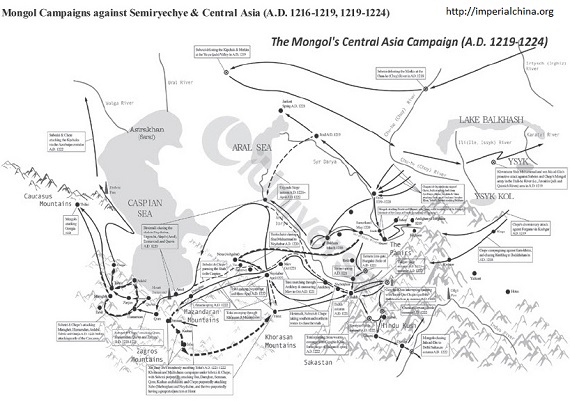
Mongol Campaign against the Jurchens (Battle of Yehuling, July of A.D. 1211)
Mongol Campaigns against Semiryechye & Central Asia (A.D. 1216-1219, 1219-1224)
Mongol Campaign against Kiev Rus (A.D. 1223)
Mongol Campaign against the Jurchens (A.D. 1231-1232)
Mongol Campaigns against the Volga Bulgars, Kipchaks, Alans, Rus Principalities, Crimea, Caucasus & Kiev Rus (A.D. 1237-1240)
Mongol Campaigns against Poland, Bohemia, Moravia, Hungary, Austria & Dalmatia (A.D. 1240-1242)
Mongol Campaign against Arsacia (Mulahida) from A.D. 1253 to A.D. 1256
Mongol Three-prong Campaign against Hezhou (Caaju) from late A.D. 1255 to early A.D. 1256
Mongol Continuous Campaigns in the Sichuan Basin (A.D.1257-1259)
Mongol Campaign against Hezhou (Caaju) & Diaoyucheng (A.D. 1257-1259)
Mongol Campaigns against the Abbasid Caliphate, Mecca, Misr (Egypt) Outposts, North Africa, and the Ayyubid & Mamluk Sultanates (A.D. 1257-1260)
|
|
The Sinification of the Khitans
Yelü Ahbaoji, who set up an independent city called 'Han Cheng', namely, Chinese city, near the bank of the Luan-he River, was an adopter of the Chinese mode of life. Yelü Ahbaoji had the Chinese captives and abductees cultivate the lands and mine the ores, in addition to captured people from the Sinicized Bo-hai state.
At one time, when the Khitans under Yelü Deguang intruded into the ancient Chinese capital city of Kaifeng, the barbarians launched the Liao dynasty that lasted half a year, and stole all the Chinese classics in the city, which were accumulated over hundreds of years, dealing a big blow to the Chinese civilization.
To the north of 'Han Cheng' (the Chinese city), along the West Liao River and Xi-lamulun River, in the valley and sandy area [i.e., the ancient Song-mo or Pine Desert area), the Khitans by the early 11th century were to build nine Chinese-style prefecture-level settlements numbering 350,000 households, including Qing[4]zhou (to the north of Linxi and west of Balin-zuoqi), Huaizhou (west of Balin-zuoqi, Tang Dynasty's Guicheng-zhou), Shang-jing (the upper capital city) [in today's Balin-zuoqi), Zuzhou (ancestral prefecture, between Huaizhou and Shangjing), Raozhou (south of Balin-youqi, Tang Dynasty's Raohua-zhou and Songmo-fu [pine desert prefecture]), Yikunzhou (southwest of Raozhou), Songshanzhou (pine hill prefecture, south of Shangjing and west of Balin-youqi) between Wuer-jimulun River and Xi-lamulun River, Yongzhou (southeast of Songshanzhou, called Tong-nabo, i.e., tents in the winter times) at the intersection of Xi-lamulun River and Laha-he River, Longhuazhou (southeast of Yongzhou) northeast of today's Naiman-qi, and Longshengzhou (southwest of Naiman-qi) etc.
Longhuazhou would be where the Khitan ancestor, Khan Qishou, dwelled, and was called by Long-ting, i.e., the dragon's court house.
Xi-lamuhe was known as the ancient Huang-shui (yellow water) or Raole-shui, and merged with Laha-he River to become the source of the West Liao-he River.
The ancient Song-mo or Pine Desert area is known as Ke-er-qin today.
Northern Song emissary Song Shou, when traveling between the Liao Zhongjing (the middle capital city) and Shangjing, described the geography of crossing the desert, passing Baima-dian (white horse lake) and crossing the Tu-he (Laha-he) River.
The ancient Song-mo would be where the ancient barbarians [including the ancestors of the Khitans, i.e., the Yuwen-shi Xianbei) fled after defeats in southern Manchuria. This is also the place that General Feng Zhanhai's Northeast Loyal and Brave Fighters, numbering by 70 to 90 thousand men, marched through under the Japanese plane bombing after fighting the Japanese at Harbin, Jirin and Changchun and trekking across the Manchuria heartland in 1932.
Northern China was inevitably mixed with nomads from Manchuria and Mongolia. The city of Beijing would remain in the hands of the Khitans (A.D. 907-1125), and then passed into the Jurchens (A.D. 1115-1234) after a short interim under Soong administration, Mongol Yuan (A.D. 1279-1368) till Ming Dynasty overthrew the Mongol yoke in A.D. 1368. For hundreds of years, the Soong Dynasty, built on top of Northern Zhou (A.D. 951-960) of the Chai(1) family, would be engaged in the games of 'three kingdom' kind of warfars. Northern Soong (A.D. 960-1127) would face off with the Western Xia (A.D. 1032-1227) and Khitan Liao in a triangle, and then played the card of allying with the Jurchens in destroying the Khitan Liao. With Northern Soong defeated by the Jurchens thereafter, Southern Soong (A.D. 1127-1279) would be engaged in another triangle game, with the other players being Western Xia and the Jurchen Jin. Southern Soong would then play the card of allying with the Mongolians in destroying Jurchen Jin, and it even sent tens of thousands of carts of grain to the Mongol army in the besieging of the last Jurchen stronghold. Soon after that, the Southern Soong generals broke the agreement with the Mongols and they shortly took over the so-called three old capitals of Kaifeng, Luoyang and Chang'an. But they could not hold on to any of the three because what they had occupied had been empty cities after years of warfare between the Jurchens and Mongols. Similar to the times of the Western Jin (A.D. 265-316) and Eastern Jin (A.D. 317-420), the northern Chinese would have fled to the south during these conflicts. While Eastern Jin re-established their capital in Nanking, the Southern Song, driven away from Nanking by the Jurchens, chose today's Hangzhou as the new capital. Hangzhou, however, had been the capital of Warring Kingdoms in Zhou times.
Western Liao Dynasty
After the demise of the Khitan Liao dynasty, the Khitan remnants launched a new kingdom in Mongolia and Central Asia that came to be known as the Western Liao dynasty or Kara-khitay that was to be usurped by Kuchlug, a Naiman prince, and conquered by the Mongols. Through the 12th century A.D., there were continuous wars between the Jurchens and Yelü Dashi’s Kara-Khitay in the three rivers’ area of Mongolia and across the Gobi Desert, with the Jurchen wars with the Onggirats continuing for almost a century. Note that Yelü Dashi set up a court at the ancient Uygur khan's Ke-dun (Khatun) city in today's Bulgan of Mongolia, i.e., the Khitan Liao dynasty's Jian'an[-jun] garrison, where the Khitan 'Zu-bu [barbarians] jiedu-shi' office and 'Xibei-Lu [northwestern] zhaotao si' office were. The Naimans adopted Nestorian Christianity ('Jing-jiao', i.e., illustrious religion of the Christian Church of the East), and were observed to be so by William of Rubruck in A.D. 1253 (see Paul Ratchnevsky); similarly, the Keraits accepted the Nestorian faith and that both Toghrul's grandfather and father had Latin names like Marghus (Markus) and Qurjaquz (Kyriakus). The Mongols first launched a war against Kara-khitai in A.D. 1214, which was an obscure record. Guo Baoyu’s biography in Yuan Shi stated that Genghis Khan and Guo Baoyu passed through Bayou the E-yi-duo city (? Uygur founder-king Kutlug Boyla or Kutlug Bilge Kaghan's Peiluo or Boyla city) of the ancient [Gu-]Xu-gui-guo state and fought against 300,000 western (i.e., Kara-khitai) army, in such engagements as the Siege Battles of Bie-shi-ba-li (Beshbalik) and Bie-shi-lan, which would be after Kuchlug's usurpation of Kara-khitai. Kuchlug himself converted to Buddhism from the Nestorian religion at his wife's request. The Mongols in 1216 ordered Subetei to attack the Merkits, a campaign that continued till A.D. 1219, with Subetei defeating the Merkits at the Chan-he (toad) River in A.D. 1218 while Chepe defeated Kuchlug's Kara-khitay, ensuing in the Mongols' first skirmish with the Khwarezmians in the Huili-he River (i.e., Ata-Malek Juvaini's Qaili and Qaimich Rivers) area in A.D. 1219.
Liao Emperors
Yelü Abaoji (Khitan Emperor Taizu, r. A.D. 907-926)
Khitan Dowager-Empress Shulü Ping, r. A.D. 926-927)
Khitan/Liao Emperor Taizong (Yelü Deguang, r. A.D. 927-947)
Khitan Liao Emperor Shizong (Yelü Ruan, r. A.D. 947-951)
Khitan Liao Emperor Muzong (Yelü Jing, r A.D. 951-969)
Khitan Liao Emperor Jingzong (Yelü Xian, r. A.D. 969-982)
Dowager-Empress Xiao-niangniang (Bali-yanyan, r. 982-1009)
Khitan Emperor Shengzong (Yelü Longxu, r. A.D. 982-1031)
Khitan Emperor Xingzong (Yelü Zongzhen, r. A.D. 1031-1055)
Khitan Liao Emperor Daozong (Yelü Hongji, r. A.D. 1055-1101)
Khitan Liao Emperor Tianzuodi (Yelü Yanxi, r. A.D. 1101-1125)
|
|
|
|
|
|
|
Sovereigns & Thearchs;
Xia-Shang-Zhou dynasties;
Zhou dynasty's vassalage lords;
Lu Principality lords;
Han dynasty's reign years
(Sexagenary year conversion table-2698B.C.-A.D.2018; 247B.C.-A.D.85)
|
|
The Sinitic Civilization - Book I is
available now on
iUniverse,
Barnes & Noble,
Amazon,
Google Play|Books
and
Nook.
The Sinitic Civilization - Book II is
available at
iUniverse,
Amazon and Barnes & Noble.
Check out the 2nd edition preface that realigned the Han dynasty's reign years strictly observing the Zhuanxu-li calendar of October of a prior lunar year to September of the following lunar year, and the 3rd edition introduction that had an overview of Sinitic China's divinatory history of 8000 years.
The 2nd edition preface had an overview of the epact adjustment of the quarter remainder calendars of the Qin and Han dynasties, and the 3rd edition introduction had an overview of Sinitic China's divinatory history of 8000 years.
The 2nd edition realigned the Han dynasty's reign years strictly observing the Zhuanxu-li calendar of October of a prior lunar year to September of the following lunar year.
Stayed tuned for Book III that is to cover the years of A.D. 86-1279, i.e., the Mongol conquest of China, that caused a loss of 80% of China's population and broke the Sinitic nation's spine.
Preview of annalistic histories of the Sui and Tang dynasties, the
Five Dynasties, and the two Soong dynasties
could be seen in
From the Khitans to the Jurchens & Mongols: A History of Barbarians in Triangle Wars and Quartet Conflicts
(The Barbarians' Tetralogy - Book III: available at iUniverse;
Google Play|Books;
Amazon;
B&N).
(A final update of the civilization series is scheduled for October of 2022, that would put back the table of the Lu Principality ruling lords' reign years, that was inadvertently dropped from Book I during the 2nd update.)
|
|
 Now, the Scourge-of-God-Tetralogy.
Book III of
The Barbarian Tetralogy, i.e., this webmaster's barbarism series, is released in October of 2022 by iUniverse. This barbarism series would be divided into four volumes covering the Huns, the Xianbei, the Turks, the Uygurs, the Khitans, the Tanguts, the Jurchens, the Mongols and the Manchus.
Book I of the tetralogy would extract the contents on the Huns from
The Sinitic Civilization-Book II,
which rectified the Han dynasty founder-emperor's war with the Huns on mount Baideng-shan to A.D. 201 in observance of the Qin-Han dynasties' Zhuanxu-li calendar.
Book II of the Tetralogy would cover the Turks and Uygurs.
And
Book IV would be about the Manchu conquest of China.
Now, the Scourge-of-God-Tetralogy.
Book III of
The Barbarian Tetralogy, i.e., this webmaster's barbarism series, is released in October of 2022 by iUniverse. This barbarism series would be divided into four volumes covering the Huns, the Xianbei, the Turks, the Uygurs, the Khitans, the Tanguts, the Jurchens, the Mongols and the Manchus.
Book I of the tetralogy would extract the contents on the Huns from
The Sinitic Civilization-Book II,
which rectified the Han dynasty founder-emperor's war with the Huns on mount Baideng-shan to A.D. 201 in observance of the Qin-Han dynasties' Zhuanxu-li calendar.
Book II of the Tetralogy would cover the Turks and Uygurs.
And
Book IV would be about the Manchu conquest of China.
From the Khitans to the Jurchens & Mongols: A History of Barbarians in Triangle Wars and Quartet Conflicts
, i.e., Book III of
the Scourge-of-God-Tetralogy,
focused on the Khitans, Jurchens and Mongols, with the missing one-year history of the Mongols' Central Asia campaigns rectified.
This webmaster, other than the contribution to the Sinology studies in rectifying the Huns' war to 201 B.C., and realigned the missing one-year history of the Mongol Central Asia war, had one more important accomplishment, i.e., the correction of one year error in the Zhou dynasty's interregnum (841-828 B.C. per Shi-ji/840-827 per Zhang Wenyu) in
The Sinitic Civilization-Book I, a cornerstone of China's dynastic history.
|
The Scourges of God: A Debunked History of the Barbarians (available at iUniverse|Google Play|Google Books|Amazon|B&N)
From the Khitans to the Jurchens & Mongols: A History of Barbarians in Triangle Wars and Quartet Conflicts
(The Barbarians' Tetralogy - Book III)
Epigraph,
Preface,
Introduction,
Table of Contents,
Afterword,
Bibliography,
References,
Index
|
|
Written by Ah Xiang
|
|

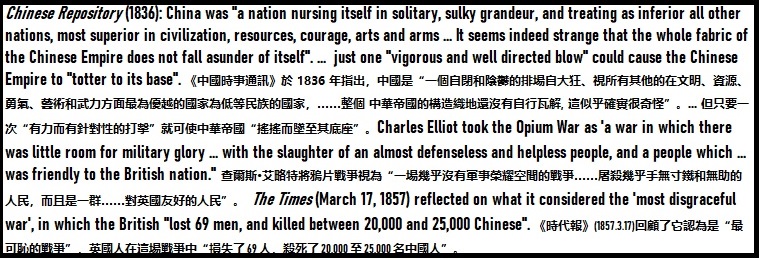
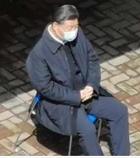








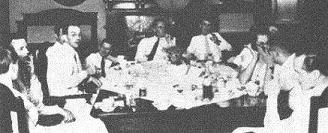
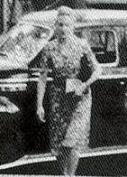
![Though, Anna Wang [Anneliese Martens], in her memoirs, expressed jealousy over Gong Peng by stating that the Anglo-American reporters had flattered the Chinese communists and the communist movement as a result of being entranced with the goldfish-eye'ed personal assistant of Zhou Enlai](GongPeng.jpg)













